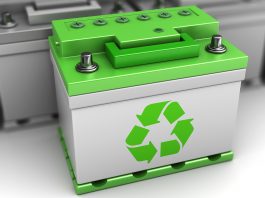A team of scientists from Washington State University (WSU) and Pacific Northwest National Laboratory (PNNL) have successfully created a sodium-ion battery.
The newly developed sodium-ion battery stores as much energy as some commercially available lithium-ion batteries. This development could be the start of a new and sustainable era for battery technology.
An innovative take on battery chemistry
The team reports the ability to deliver a capacity similar to some lithium-ion batteries and to recharge successfully, keeping more than 80% of its charge after 1,000 cycles. “This is a major development for sodium-ion batteries.
“There is great interest around the potential for replacing Li-ion batteries with Na-ion in many applications,” said Dr Imre Gyuk, director of Energy Storage for the Department of Energy’s Office of Electricity who supported this work at PNNL.
Lithium-ion batteries are deeply ingrained in the technology industry, they have numerous applications such as mobile phones, laptops, and electric vehicles. Due to lithium batteries being made from scarcely available materials, like cobalt and lithium, this battery technology could have an expiration date. As demand for electric vehicles and electricity storage rises, these materials will become harder to source and possibly more expensive.
Sodium-ion batteries offer a sustainable alternative. Made from cheap, abundant, and sustainable sodium, these batteries could make a good candidate for large-scale energy storage.
The challenges faced by sodium-ion batteries
A key problem for some of the most promising cathode materials is that a layer of inactive sodium crystals builds up at the surface of the cathode, stopping the flow of sodium ions and, consequently, killing the battery.
“The key challenge is for the battery to have both high energy density and a good cycle life,” said Junhua Song, lead author on the paper and a WSU PhD graduate who is now at Lawrence Berkeley National Laboratory.
As part of the work, the research team created a layered metal oxide cathode and a liquid electrolyte that included extra sodium ions, creating a saltier soup that had a better interaction with their cathode. Their cathode design and electrolyte system allowed for continued movement of sodium ions, preventing inactive surface crystal buildup and allowing for unimpeded electricity generation.









